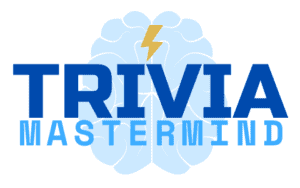Team themes are pivotal in unifying a group of individuals, fostering enhanced communication, facilitating the resolution of conflicts, and boosting the overall performance and productivity of a team. With a surge in the awareness of its importance across various societal sectors such as education, business, sports, and entertainment, understanding the concept and application of team themes becomes increasingly relevant. This compilation embarks on an in-depth discussion on the essence of team themes, roles it plays in group dynamics, the process of its formulation, and its impact on team performance. Furthermore, it extrapolates on the application of team themes across diverse societal sectors.
Understanding the Concept of Team Themes
The Concept of Team Themes
Team themes are integral components of any group’s structure. These themes offer a guiding principle or shared goal for all members of the team to rally around. They can help to inspire, engage, and motivate team members, as well as clarify the main objective or purpose of a team.
Significance of Team Themes
The importance of team themes in a group setting cannot be overstated. Teams without a common theme or objective may lack direction and cohesiveness, leading to inefficiency and miscommunication. On the other hand, teams with clear, well-defined themes are often more productive and successful in achieving their goals. Further, themes can serve as an excellent tool for team building and strengthening interpersonal relationships among team members.
Historical Context of Team Themes
The concept of a team theme is by no means a modern invention. Historically, many successful organizations, sports teams, and military units have used team themes to unite their members and focus their efforts. For example, during World War II, the U.S. Marines used the theme “Semper Fidelis” (Latin for “always faithful”) to inspire loyalty and dedication among their ranks.
Examples of Prominent Team Themes
There are numerous notable examples of team themes in various sectors. In sports, the mantra “Just Do It” not only represented the Nike brand but also served as an informal theme for many athletes and teams. In business, tech giant Google’s informal motto “Don’t be evil” served as a team theme emphasizing the company’s commitment to ethical business practices. Effectively chosen and implemented team themes can create a strong, unified identity, fostering a sense of belonging and communal purpose.
Implementing Team Themes
In various environments, team themes can be utilized effectively. For instance, if we take a project team, a theme focusing on a specific objective or primary value such as “Innovation and Excellence” might be the guiding principle. This particular theme propels team members to pursue unique solutions and deliver superior outcomes. Similarly, in a sports team setting, a theme like “Teamwork and Tenacity” could serve as motivation for players to unify and persistently strive forward, even when faced with obstacles.
Implementing such team themes can have a favorable impact on team performance. When team members synchronize their efforts in line with the common theme, a sense of unity and collaboration is forged. As a result, this could heighten morale, stimulate creativity, and provoke a stronger commitment to fulfill the team’s goals.

The Role of Team Themes in Group Dynamics
How Team Themes Shape Group Dynamics
Team themes have a substantial bearing on group dynamics. Serving as a harmonizing idea or notion, a team theme steers a group’s behaviors, mindsets, and goals. To instill this theme, teams might adopt it in the form of a slogan, motto, or logo. Such visible signs of the theme can rally the team members and reinforce their shared community identity.
Fostering Unity Through Team Themes
Strong team themes can foster unity among team members. When a theme is well-chosen and meaningful to the group, it serves as a constant reminder of their shared purpose. This fosters a sense of belonging and camaraderie among team members, which can, in turn, reinforce the group’s cohesion and unity.
Boosting Morale
Team themes can also have a profound impact on morale. A compelling and inspiring theme can act as a motivational tool, providing team members with a sense of purpose and motivation. In challenging situations, the team theme can serve as a beacon of hope and inspiration, reminding team members of their higher purpose and shared objectives which can boost morale, motivation, and consequently, productivity.
Promoting Teamwork
Team themes can also promote teamwork by reinforcing the idea that team members have a shared goal and are working together to achieve it. This can encourage collaboration and mutual support among team members, facilitating a more harmonious and productive working relationship.
Psychological Aspects of Team Themes
Team themes can have a significant psychological impact on team members. The unity generated by a strong team theme can foster a sense of social identity and pride among team members, bolstering their self-esteem and confidence. They can also influence team members’ perceptions of the team, its goals, and the external environment, shaping the group’s collective mindset and influencing its overall performance.
Improving Communication
Team themes can aid in improving communication within the group. When a clear and shared team theme is established, it can help clarify the team’s objectives and goals, ensuring that every member is aligned and working towards the same end. This can reduce misunderstandings and conflicts, and foster more effective and efficient communication.
Defining Roles and Responsibilities
In addition, a strong team theme can help define roles and responsibilities within a team. It provides a framework and direction for the team’s tasks and actions. In concrete terms, who does what, when, and how, can be guided by the team theme.
Role of Team Themes in Conflict Resolution
Team themes play a significant role in outlining and structuring conflict resolution strategies within a group. A strong and unified team theme helps mitigate disagreements by offering a consistent roster of values for conflict resolution. Having common values, fostered by a shared team theme, mitigates chances of discord and promotes healthier, more harmonious interactions among team members.

Developing a Team Theme
Harnessing the Power of Shared Goals
In the creation of a team theme, forging shared goals serves as the preliminary and crucial step. These goals work as the team’s backbone, guiding principles, and driving force. A common objective ensures that all team members are navigating in the same direction, promoting alignment. These shared goals are best established during team conventions, ensuring each team member’s voices and perspectives are heard and valued. Such deliberations kindle active participation and build an inclusive atmosphere, indispensable in a team-focused environment.
Reflecting the Team’s Spirit and Values
A team theme should ideally mirror the spirit and values of the team. It means the theme needs to be authentic and represent the true essence of the team. Identification of team spirit and values requires an assessment of the team’s characteristics, strengths, and mission. Collaborative brainstorming sessions involving all team members can be helpful in this process. Recording these details and weaving them into the theme will reinforce the team’s identity and encourage unity and integration.
Incorporating Creativity
Building a team theme invites creativity and uniqueness. It’s an opportunity to showcase the personality of your team, and hence, creativity should not be limited. Creative expression can be promoted through engaging workshops or activities that provoke innovative thinking. Crafting stories, visual presentations, role plays or even team-building games can all be vehicles to generate creative ideas. Consideration of different perspectives and ideas contributes to a more comprehensive and diverse theme.
Inclusivity and Relevance
Inclusivity and relevance are essential aspects of creating a team theme. The theme should represent all members’ perspectives and voices to create a sense of belonging, which will foster improved collaboration. Furthermore, the team theme should be relevant to the team activities and objectives. It should resonate with what the team does and aims to achieve. This relevance will make the theme meaningful and worth embracing by each member on the team.
Conceptualizing to Finalizing Team Themes
The development of a team theme spans various phases ranging from conceptualization, curation, sequencing, to refining. Initiate the process with a brainstorming session involving all team members, allowing free exchange of thoughts and ideas. Upon compiling sufficient ideas, the next course of action is curation, where the best, most representative concepts are chosen meticulously. These ideas are then organized sequentially to shape a unified theme. The concluding step involves refining the theme, paring it down to its most fundamental portions which echo the team’s objectives and principles. On completion, the established team theme ought to convey the team’s mission, fostering unity, cooperation, and a sense of identity.

The Impact of Team Themes on Performance
Comprehending Team Themes
Discussing team themes translates to discussing the joint concepts, principles, and practices that bind a team towards their common objective. Identifying and utilizing these themes can significantly enhance a team’s effectiveness and output. For instance, research by Deloitte demonstrated that teams which are well-aligned and unified produce superior work, make optimal decisions, and execute their tasks with greater speed and efficiency.
Power of Shared Goals and Values
Shared goals and values function as powerful motivators, providing purpose and a sense of camaraderie among team members. The Harvard Business Review conducted a study with 200 employees, where a shared feeling of purpose was found to correlate with team engagement and achievement of goals. When team members have shared values and objectives, they are more committed to the team and its goals because they each have a personal stake in the outcome. This shared investment drives productivity and enhances satisfaction among team members.
The Role of Communication in Team Themes
Communication contributes significantly to the development of team themes. Regular and open communication encourages the spread of ideas, facilitates collaboration, and fosters a culture of transparency. A case study analyzing Ford Motor Company’s turnaround strategy in the 2000s highlights the importance of open, consistent communication. The company managed to reverse its declining fortunes by implementing regular communication meetings where employees could freely share their thoughts and ask questions. These meetings were instrumental in creating a shared understanding of the company’s goals, which increased motivation and commitment.
Emotional Intelligence and Team Themes
Emotional intelligence is a crucial component of effective team themes. Teams with high levels of emotional intelligence demonstrate empathy, understand each other’s perspectives, and work effectively together, reducing conflicts and misunderstandings. Google’s Project Aristotle, a study of hundreds of the company’s work groups to determine what makes teams successful, found that high emotional intelligence was a key factor in team success.
Impact of Team Themes on Satisfaction
Team themes not only drive productivity but also enhance satisfaction among team members. A study from University of Phoenix concluded that team members feel a greater sense of satisfaction when they work within a team that shares a common goal and possesses a harmonious, respectful work culture. This satisfaction linked with a lower turnover rate, as team members are less likely to leave a job where they feel part of a collective goal and are valued for their contributions. Team themes, therefore, play a significant role in employee retention and job satisfaction.
Leveraging Team Themes towards Boosted Performance
Mastering the ability to identify, enhance, and apply team themes is a clear pathway towards better performance and productivity. Leaders have the power to cultivate an environment that advances the formation and growth of existing themes within the team. This can be achieved by endorsing open communication, understanding the nuances of team interactions, fostering goals that resonate with everyone, and cultivating a positive culture. Achieving these allows a team to unlock its full potential, reach loftier accomplishments, and fosters a deep sense of contentment in their collective tasks.

Team Themes in Different Societal Sectors
The Role of Team Themes in Education
In the vast realm of education, team themes hold a spot of undeniable importance. Both educators and their pupils heavily depend on joint efforts to expedite the learning process. The themes that come to life in this context often revolve around fruitful communication, cooperation, and problem-solving techniques. Students who are given opportunities to work as part of a team can refine their interaction skills and become equipped to handle conflicts in a refined manner.
In addition, nurturing a learning environment based on teamwork has been shown to amplify students’ ability to retain, comprehend, and employ the knowledge they have acquired. This approach is an embodiment of the task-relationship team model, wherein the task at hand is to grasp and fully understand the academic material, while the relationship consists of the level of synergy and connectivity among the team members.
Team Themes in Business
In the business realm, team themes are applied in achieving corporate objectives and improving office culture. A typical team structure in business may include leadership, brainstorming, problem-solving, communication, and conflict resolution themes. Businesses often use the Belbin team roles or the Myers-Briggs Type Indicator to identify individual strengths and weaknesses. This knowledge helps build balanced teams, lead to more effective project management, and improve employee relations.
Teamwork can also help streamline business processes and decision-making. Companies that promote teamwork in their culture report a more engaged, dedicated, and satisfied workforce. Creating a strong team culture also leads to greater innovation and creativity.\
Team Themes in Sports
In sports, team themes enhance team cohesion, contribute to strategic planning, and define team dynamics. Sports teams often use slogans or mottos that reflect their team themes, emphasizing resilience, determination, and cooperation.
Coaching plays a significant role in instilling team themes in sports. Coaches nurture important qualities such as discipline, respect, and teamwork in athletes. Regardless of loss or gain, it’s the collective responsibility and shared purpose that propel the team forward.
Team Themes in Entertainment
The entertainment industry employs team themes in various forms, from film production to music bands. A movie, for instance, is a product of a team with distinct yet interconnected roles, including producers, directors, actors, and crew members. They need to work in unison to reach a common goal- a successful movie.
In music bands, the members must synchronize their skills to create harmony. Each member has an individual role but their success relies on the collective effort. These team themes help in promoting unity and understanding among members while enhancing their creativity and performances.
In broadcasting, journalism, and event organizations, the success of production depends on cooperation among different departments. From news gatherers, editors, scriptwriters, presenters to technical crew, everyone must perform their role effectively for a successful show. Therefore, team themes such as communication, coordination, and time management become integral.
Through the implementation of team themes in these societal sectors, each group benefits in several ways fostering strong relationships, harmonious collaboration, increased productivity, and more efficient outcomes. The application and adaptation of team themes indeed resonate across all sections of society, playing an irreplaceable role in their successes.

From this discussion, it is undeniably apparent that team themes serve as an invaluable tool in harnessing the collective energy of a team towards achieving common goals. These themes contribute significantly to the individual and collective morale, communication, and harmonious functioning within a team. A well-developed team theme resonates with each member’s spirit and values, thus driving commitment, satisfaction, and optimal productivity. Despite the differences across various societal sectors, the essence and application of team themes remain a constant – to facilitate unity and enhance performance.
